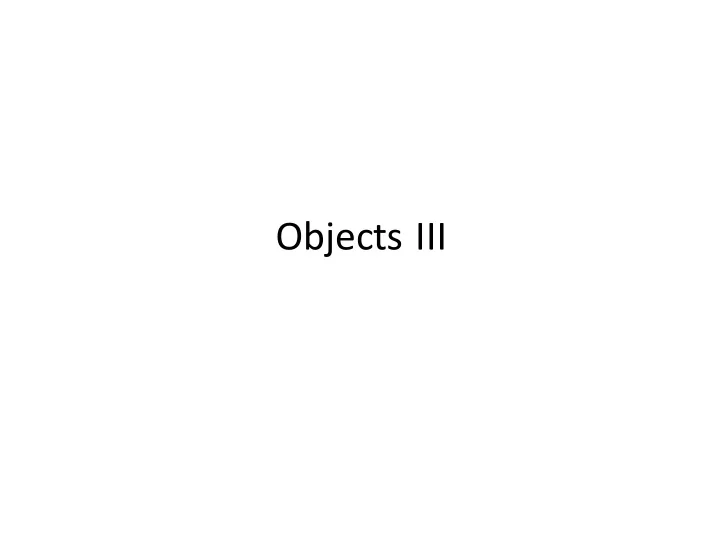

Objects III
• You should have a dog class that supports energy. Playing fetch decreases a dog's energy, sleeping increases it. • Start with your code from last time, or get feb-24-start.cpp. • Warmup : Fill in the sleep method. This method should let the dog sleep for a certain number of hours, and increases their energy by that amount. • Fill in the chase method. Add a method chase(dog & buddy) to your class. This method will let your dog chase another dog. A dog can only chase another if both dogs’ energies are above zero! Inside the method, print a message with both dogs' names. This method should decrease both dogs' energies by 1. • Hint : Inside a class, you have access to your own object's private variables, plus private variables of other objects that are passed in as arguments!
Constructors and destructors • A constructor (abbrev ctor ) is a method that is run automatically when an object is created. • A destructor (abbrev dtor ) is a method that is run automatically when an object is "destroyed." – For all objects right now, this means when the object goes out of scope.
Constructors • Constructors are commonly used to initialize the fields (variables) in a class to appropriate values. • Without constructors, the user would have to set all the fields in a class by hand after each object creation. • The name of a constructor is always the same name as the class itself.
Dog default constructor • What are appropriate values to initialize each field to in our dogs?
Dog constructors • Classes can have multiple constructors. • The default constructor never takes any arguments, but other constructors can. • These arguments are typically used to set the fields of the class.
Destructors • The name of a destructor is always the same name as the class, prefaced with a ~ (tilde). – Destructors never have any arguments, and there can be only one per class.
Recommend
More recommend